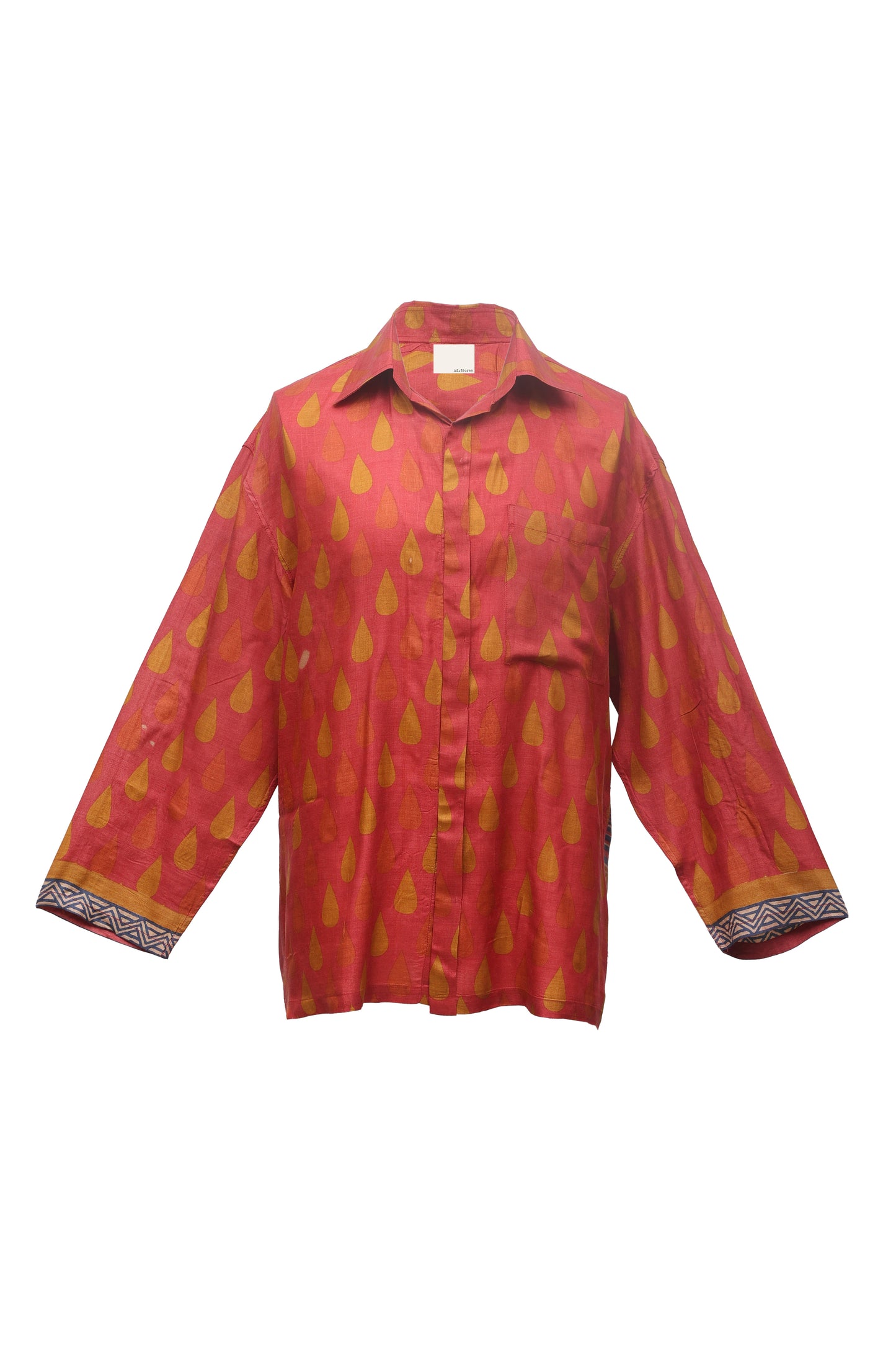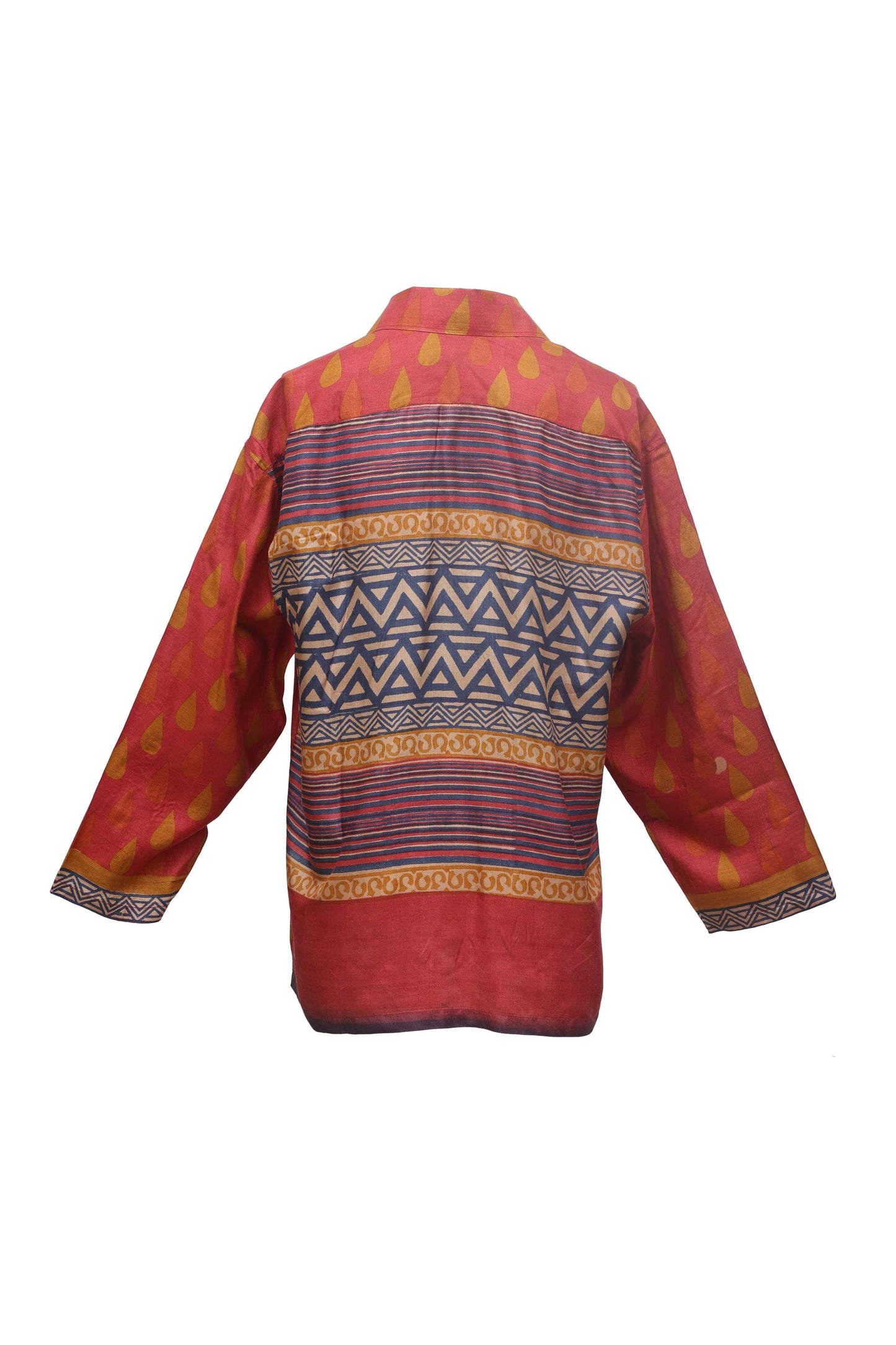DHOOB.008
DHOOB.008
Introducing our one-of-a-kind, Dhoob Shirt. It has long sleeves, spread collar and a pocket. This product is cut for loose fit.
The garment has a vibrant expression. Hand woven in Tussar silk. It has geometrical ornaments at the back in Ajrakh printing technique and a Buti pattern in the front in shades of yellow and orange in screen printed technique.
Tussar silk weaving has its origins deeply rooted in the rich tapestry of Indian textiles, particularly in the eastern states of India such as Bihar, Jharkhand, and West Bengal. Also known as "wild silk," Tussar Silk is derived from the larvae of several species of silk moths, and its unique texture and sheen make it highly prized.
The irregularities in the yarn give the fabric a distinct charm, with variations in texture adding to its allure. Tussar silk is often woven with traditional techniques, such as handloom weaving, which further enhances its artisanal appeal.
Ajrakh is a traditional form of block printing that originated in the Sindh region (now in Pakistan) and Kutch, Gujarat, India. It is known for its intricate geometric and floral motifs, natural dyeing techniques, and deep cultural significance. The word Ajrakh is believed to be derived from the Arabic word “Azrak,” meaning blue, which is a dominant colour in Ajrakh textiles. Ajrakh printing uses a resist-dyeing technique called “Dabu,” where sections of the fabric are covered with a resist paste (made from clay, lime, and gum) to prevent dye penetration. This process is repeated multiple times with different colours to achieve intricate patterns. Ajrakh fabrics are traditionally dyed using natural dyes, including: Indigo, to achieve the signature deep blue shades. Madder root for deep red hues. Pomegranate rind, turmeric, and alum for yellows and greens. Iron fillings and tamarind seeds- to create black. The dyeing process is time-consuming, involving multiple washes, resist techniques, and sun exposure to achieve the desired depth of colour.
Screen printing, a versatile printing technique, has a history dating back over a thousand years, with its origins traced to ancient China. However, it gained prominence in the modern era during the early 20th century, particularly with the development of photo-reactive chemicals and synthetic materials.
The process involves using a mesh screen to transfer ink onto a substrate, such as fabric, paper, or wood. Each color requires a separate screen, allowing for intricate multi-color designs with precise registration. This technique is favored for its ability to reproduce vibrant colors and fine details consistently.
Keynote from Kārātoyaa:
• Please note, that due to antique nature of the fabrics there may be signs of past experiences - we believe it adds value and a meaning to the garments.
• Some naturally dyed fabrics even after lasting generations may leave color
• Please keep in mind that all Kārātoyaa pieces are Dry Clean only with the Professional service provider.
Couldn't load pickup availability
DETAILS
DETAILS
Dhoob shirts series is a loose fit, long sleeved, one pocket design with a spread collar .
COMPOSITION
COMPOSITION
UPCYCLED SILK
SIZE & FIT
SIZE & FIT
L-XL
length 76cm
sleeve 55
chest 122 cm
CARE
CARE
TO BE TREATED WITH LOVE AND CLEANED AT PROFESSIONAL DRY CLEANER ONLY
Share




